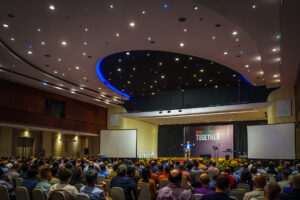
NEW DELHI (BP)–An Indian bureaucrat-turned-activist has launched a movement to encourage hundreds of thousands of low-caste Hindus to embrace Buddhism, a religion that would give them equal status in society.
The move is strongly opposed by extremist Hindu organizations, including some closely allied to governing Bharatiya Janata Party, according to a Nov. 6 report on CNSNews.com.
On the other hand, Roman Catholic bishops have supported it, on the grounds that India’s constitution guarantees the right of its citizens to choose the religion of their choice.
Ram Raj, an income tax officer behind the movement aimed at bettering the lives of low-caste Hindus (called “Dalits” or “untouchables”), oversaw a first mass conversion ceremony on Sunday, when thousands of people converted to Buddhism.
Raj and his followers defied police restrictions and political opposition to hold the conversion ceremony in front of a bronze Buddha in New Delhi.
Raj argued that despite a constitutional guarantee of equal rights for all Indian citizens Hindus continue to enforce a rigid caste hierarchy.
Efforts to improve Dalits’ lives by offering them reserved government jobs, educational opportunities and a range of other incentives have not worked, he said. Fifty years after independence, the Indian mindset has not changed.
“The government does not want the Dalits to walk out of the age-old caste system and this is the main reason for their opposition to conversion of Dalits to Buddhism,” Raj said during the ceremony.
He claimed millions of Dalits across the country were waiting to convert to Buddhism, tired of being discriminated against. A crowd estimated at between 8,000 and 20,000 changed their religion on Sunday, although organizers claim police prevented many more from arriving at the venue from other areas.
Low-caste Hindus comprise one-fourth of India’s more than 1 billion people and the biggest voting bloc in democratic institutions.
Dalits are at the lowest rung of the caste ladder, and their occupation was regarded to be scavenging. The former priestly class, the Brahmins — the only ones allowed to perform religious rituals — are at the top.
Although discrimination against Dalits is outlawed, it remains a widespread phenomenon. Dalits can even face death if they enter a temple reserved for upper-caste Hindus.
Most political parties woo Dalits during election campaigns, but “simply dump them” once the votes have been cast, one conversion advocate contended.
An official of a Dalit political party, meanwhile, criticized the mass conversions, calling the ceremony a political gimmick and asking whether the thousands of converts would formally relinquish their status, thus surrendering the various incentives the government gives low-caste Hindus.
Prakash Trivedi, an office bearer of the fundamentalist Hindu organization Vishwa Hindu Parishad (VHP), said the conversions were being backed by Christian organizations who had found a backdoor route to winning converts.
“Since the Hindus have seen through the Christians’ game of conversion, they want to take the Buddhist route to achieve their goal [of winning Hindus away from their faith],” he alleged.
VHP representative S. Ramachandran said it wouldn’t be long before the new converts to Buddhism were again changing their religion – to Christianity.
While supporting the Dalits’ decision to convert to Buddhism, the Catholics Bishops’ Conference of India has denied any involvement in the initiative.
Hindu activist groups have accused Christian missionaries of using inducements to lure poor people to convert to Christianity. Christians and their institutions have come under attack as a result.
According to an earlier report from the New York-based group Human Rights Watch, the past two years have produced more incidents of violence against the Christian community in India than in all the years since independence in 1947.
–30–
Malhotra is a correspondent with www.CNSNews.com. Used by permission.
















